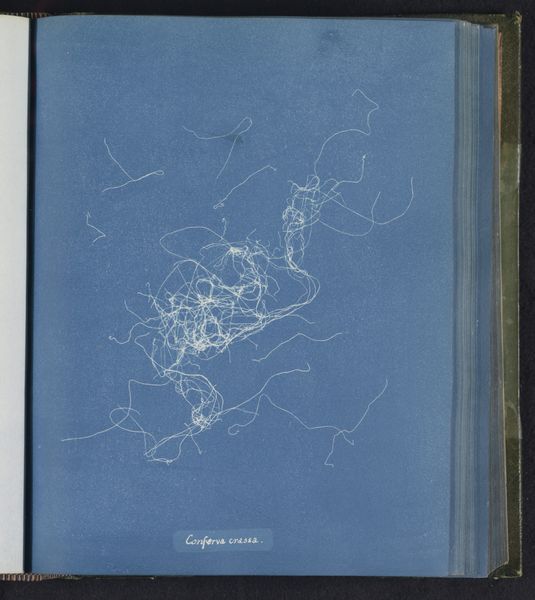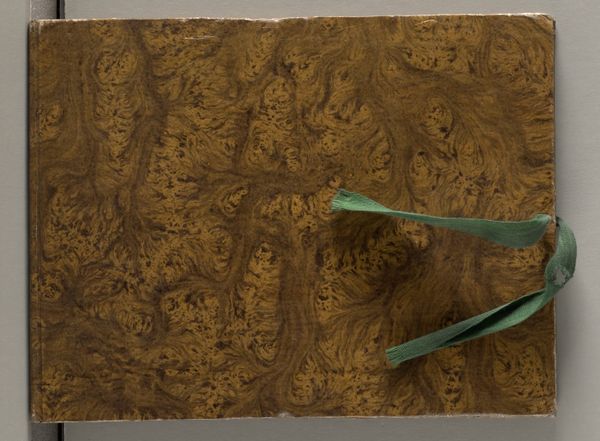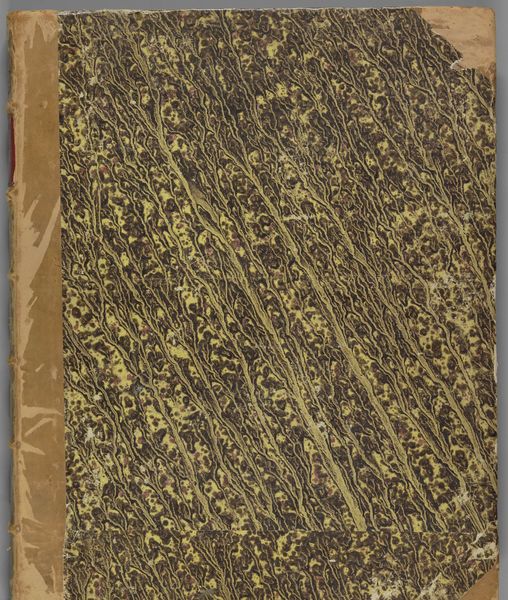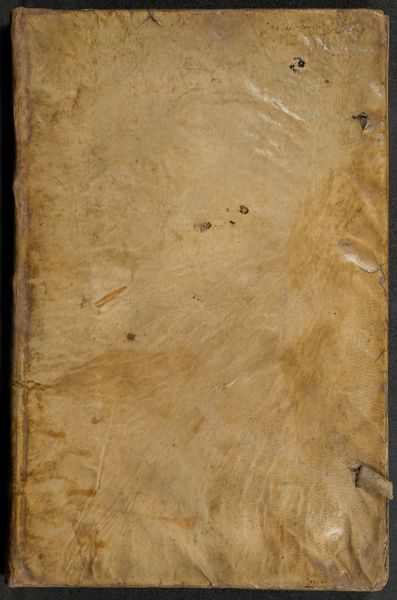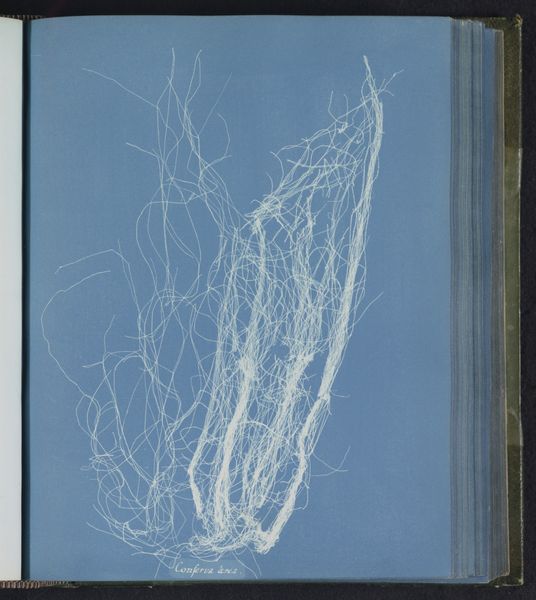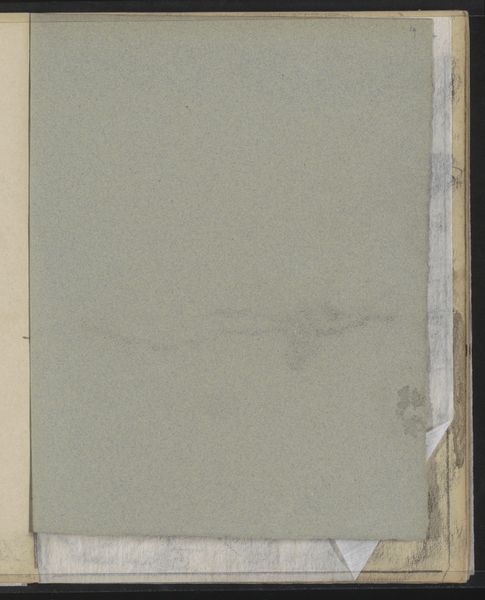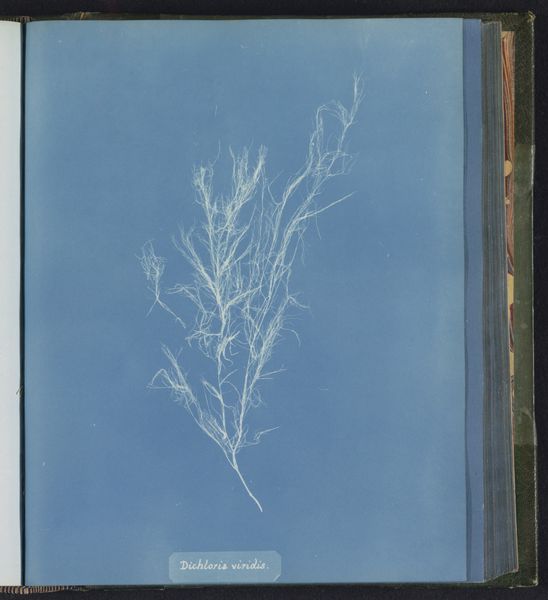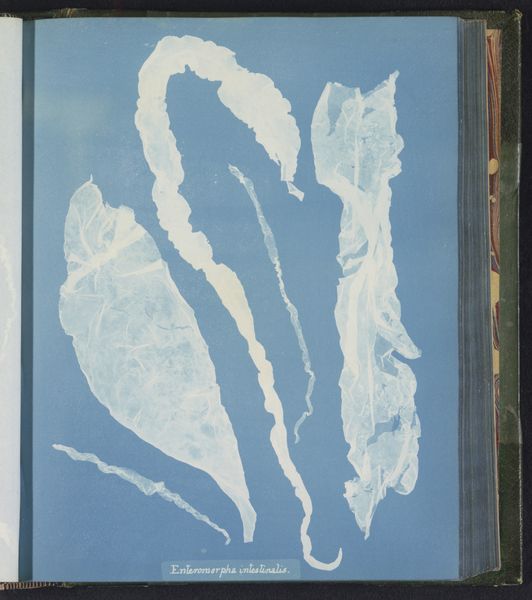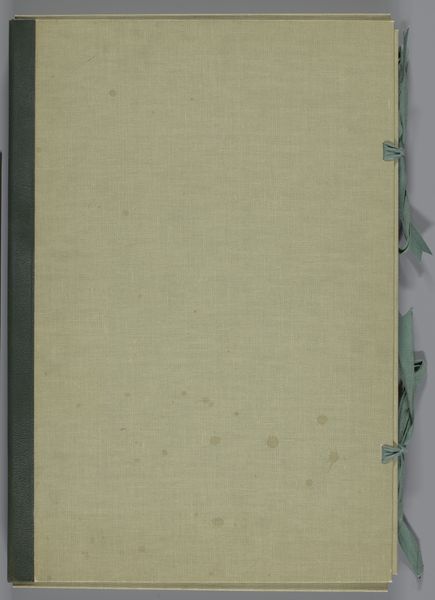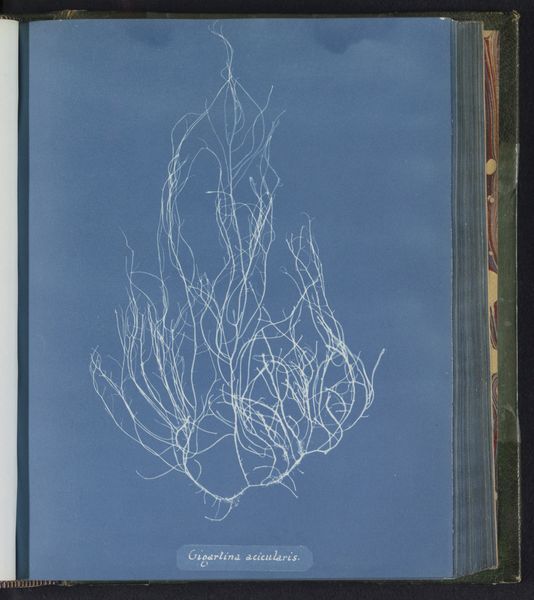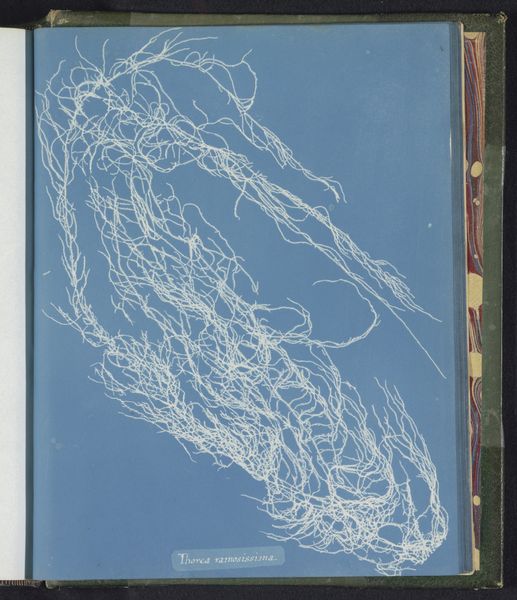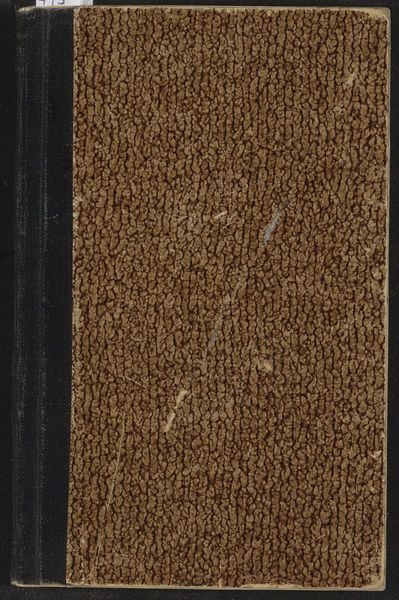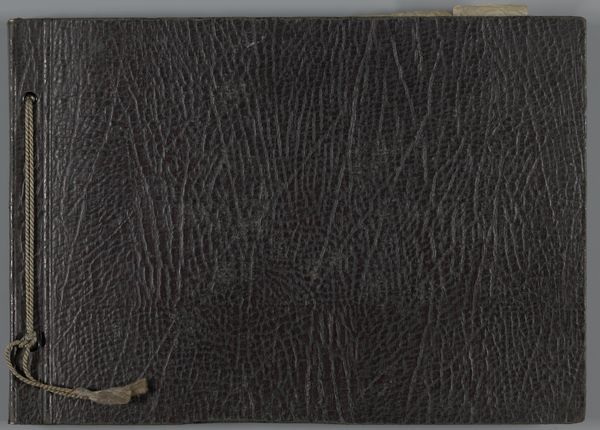
#
art-nouveau
#
pasteup
#
geometric pattern
#
paste-up
#
linocut print
#
minimal pattern
#
pattern repetition
Dimensions: height 396 mm, width 302 mm, thickness 33 mm, height 824 mm, width 612 mm
Copyright: Rijks Museum: Open Domain
Editor: This is *Map for 22 Photos of Designs by Mathieu Lauweriks*, created sometime between 1898 and 1918. At first glance, it strikes me as being very simple, almost craft-like. I’m drawn to the handmade feel of the cover with its repeating patterned design. How should we interpret the social or manufacturing intent? Curator: The binding and design become really significant when you consider Lauweriks’ context. He was deeply involved in the Dutch Art Nouveau movement, where there was this huge emphasis on the unification of art and craft. Isn't this repetitive pattern of design itself an indicator of an early mode of reproducible aesthetics through printmaking, and its role in disseminating design ideas within the Arts and Crafts movement? Editor: So, you’re saying the book itself, as a crafted object, speaks to that merging of art and utility? The "means of production" become part of the artwork. Curator: Precisely. Think about the materials—the paper, the ink, the binding. These weren't just neutral supports for images; they were actively chosen and worked with. This pattern isn't just a visual element; it's an expression of the ideals driving the entire movement. The repetition minimizes the artist's ego, bringing visual arts and design to mass audiences for functional reasons. Editor: I see. So the value isn't just in the designs contained within, but also in the conscious effort to create a unified aesthetic experience through materials and method. It reframes traditional hierarchy for fine art. Curator: Exactly. And by focusing on how it's made and distributed, we move beyond just appreciating the 'art' to understanding the network of production, labor, and consumption surrounding it. Editor: That definitely gives me a richer understanding. I was initially focused on its aesthetic appeal, but understanding the labor and the intent makes me appreciate how design movements affect social structures and economies.
Comments
No comments
Be the first to comment and join the conversation on the ultimate creative platform.
